Abstract
Upon desiccation of gametophytes of the desiccation-tolerant moss Tortula ruralis preexisting pools of poly(A)− RNA (rRNA) remain inact, regardless of the speed at which desiccation is achieved. Preexisting poly(A)+ RNA pools (mRNA) are unaffected by slow desiccation but are substantially reduced during rapid desiccation. Poly(A)− RNA involved in protein synthesis is also unaffected by desiccation, whereas the levels of polysomal poly(A)+ RNA in rapid- and slow-dried moss closely reflect the state of the protein synthetic complex in these dried samples.
Poly(A)− RNA pools, both total and polysomal, are also stable during the rehydration of both rapid- and slow-dried moss. The total poly(A)+ RNA pool decreases upon rehydration, but this reduction is simply an expression of the normal turnover of poly(A)+ RNA in this moss. Analysis of polysomal fractions during rehydration reveals the continued use of conserved poly(A)+ RNA for protein synthesis. The rate of synthesis of poly(A)+ RNA upon rehydration appears to depend upon the speed at which prior desiccation is administered. Rapidly dried moss synthesizes poly(A)+ RNA at a faster rate, 60 to 120 minutes after the addition of water, than does rehydrated slowly dried moss. Recruitment of this RNA into the protein synthetic complex also follows this pattern. Comparative studies involving the aquatic moss Cratoneuron filicinum are used to gain an insight into the relevance of these findings with respect to the cellular mechanisms associated with desiccation tolerance.
Full text
PDF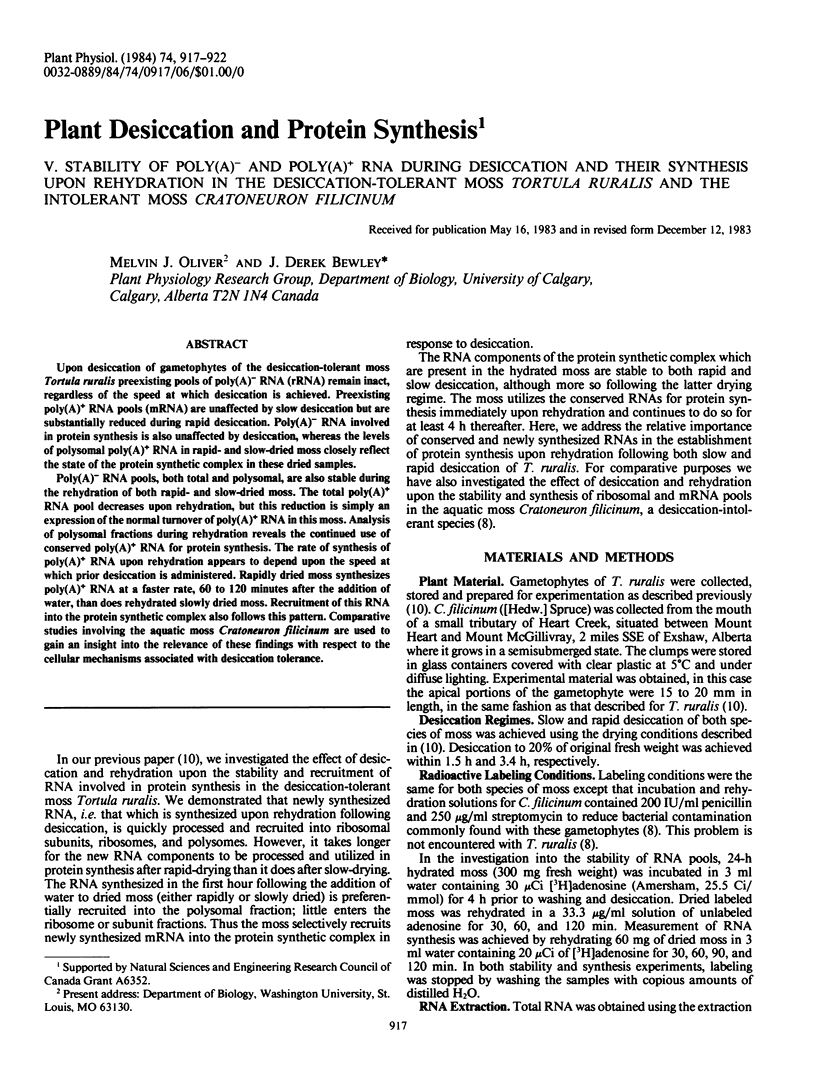
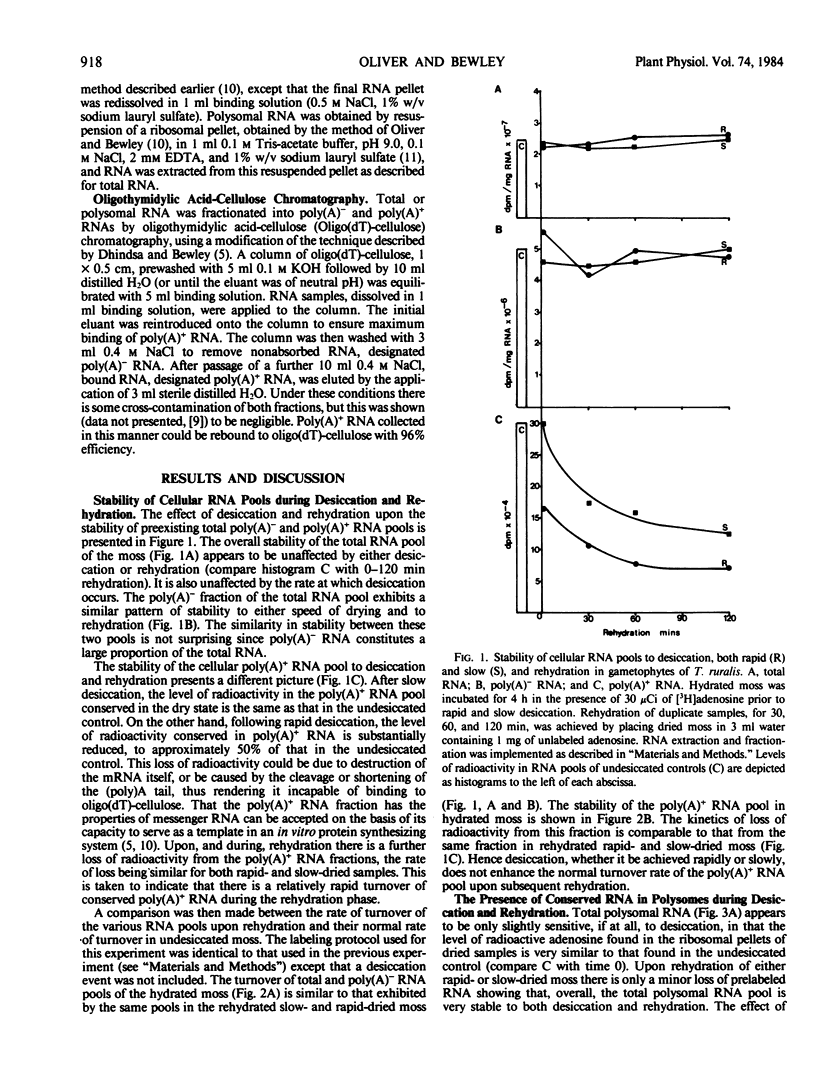
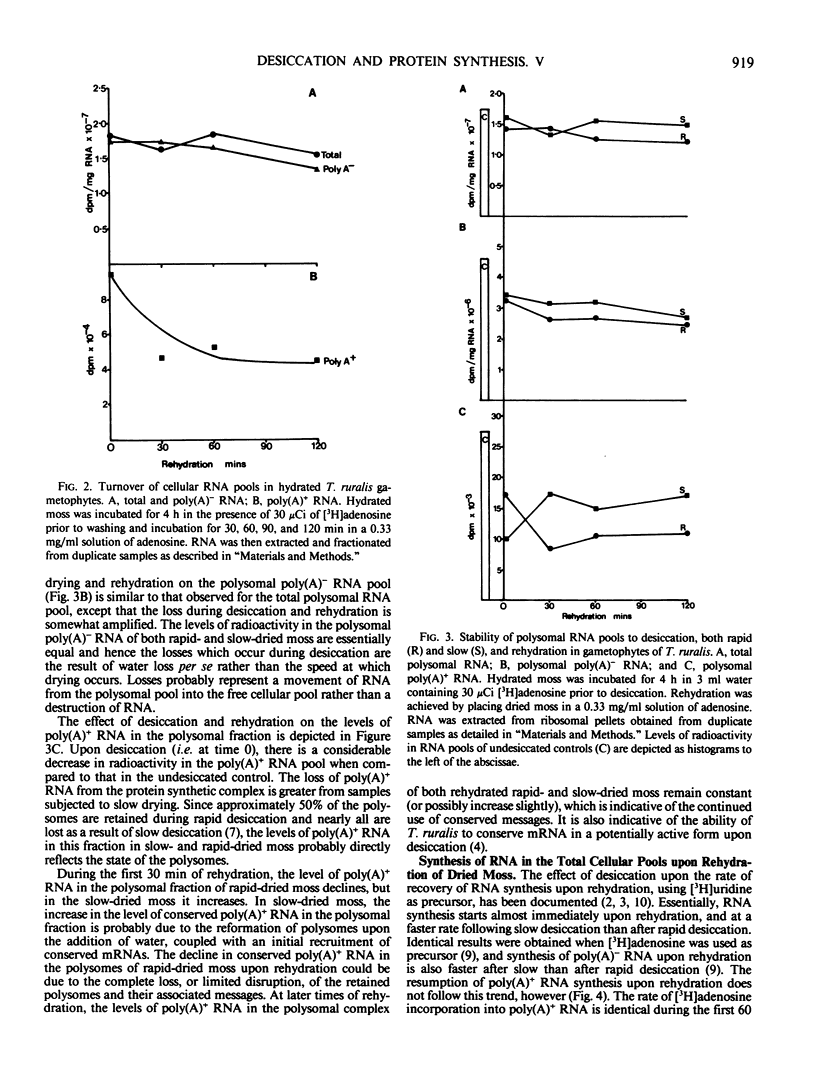
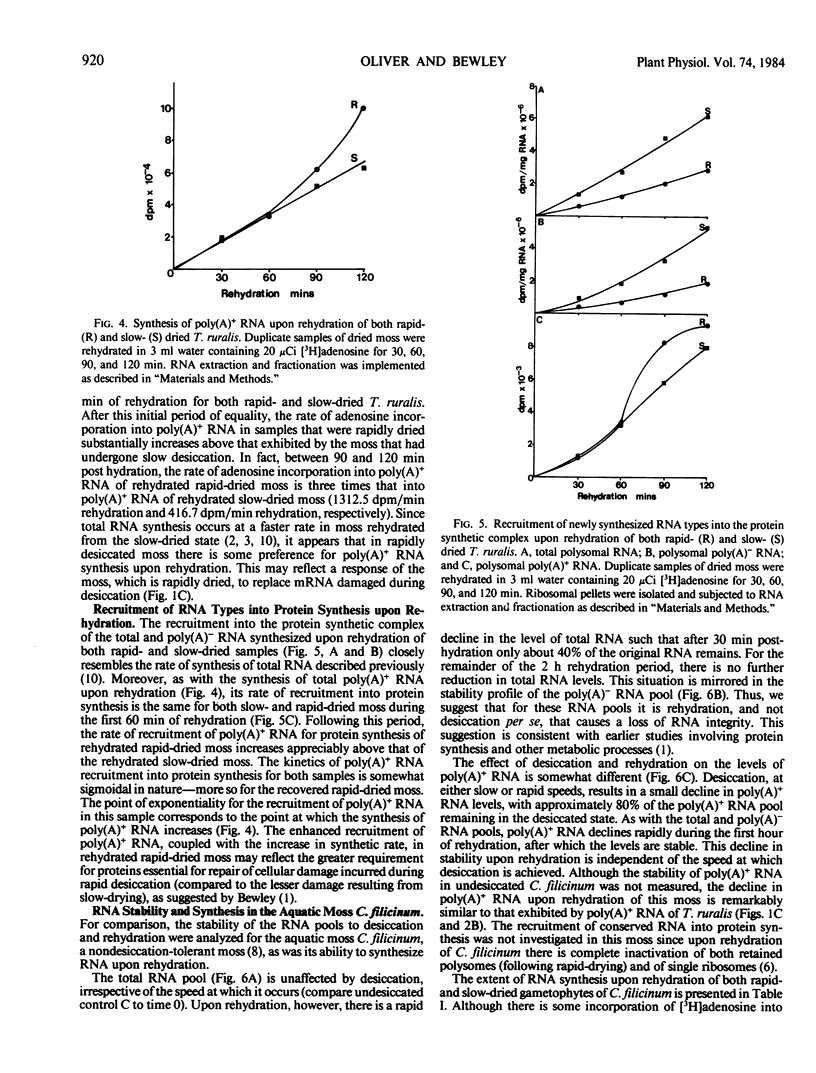
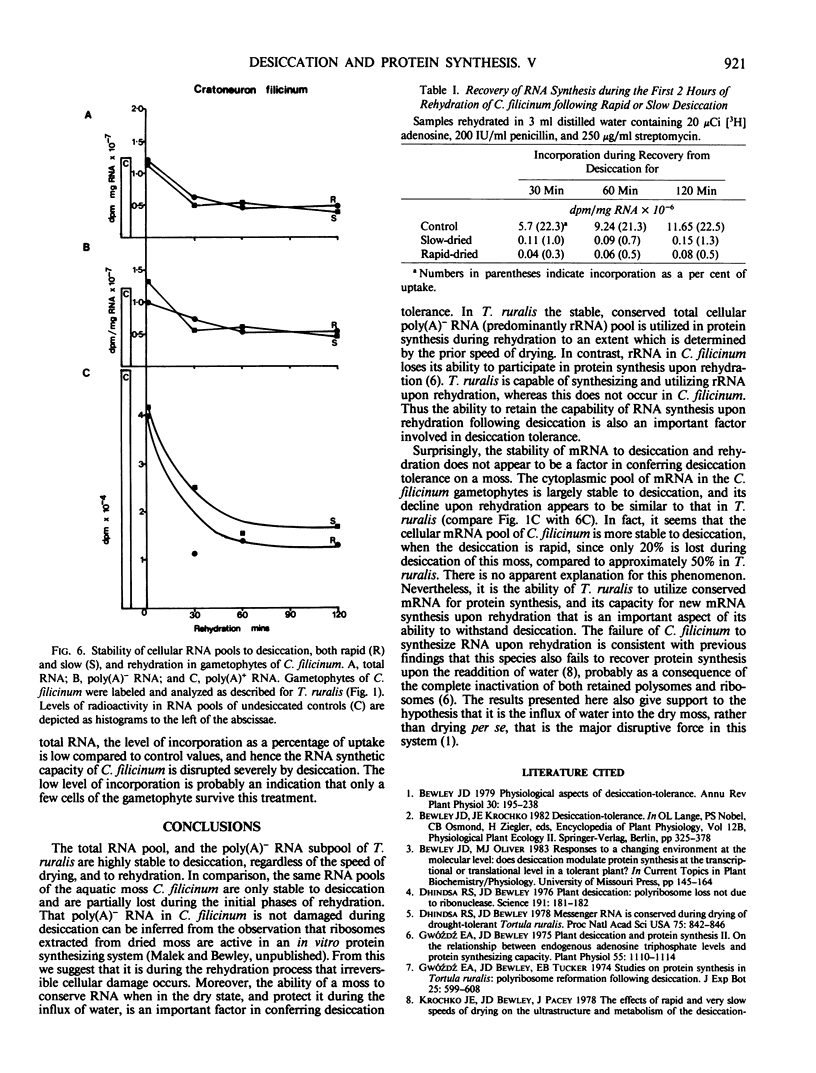

Selected References
These references are in PubMed. This may not be the complete list of references from this article.
- Bewley J. D., Gwódź E. A. Plant Desiccation and Protein Synthesis: II. On the Relationship between Endogenous Adenosine Triphosphate Levels and Protein-synthesizing Capacity. Plant Physiol. 1975 Jun;55(6):1110–1114. doi: 10.1104/pp.55.6.1110. [DOI] [PMC free article] [PubMed] [Google Scholar]
- Dhindsa R. S., Bewley J. D. Messenger RNA is conserved during drying of the drought-tolerant moss Tortula ruralis. Proc Natl Acad Sci U S A. 1978 Feb;75(2):842–846. doi: 10.1073/pnas.75.2.842. [DOI] [PMC free article] [PubMed] [Google Scholar]
- Dhindsa R. S., Bewley J. D. Plant desiccation: polysome loss not due to ribonuclease. Science. 1976 Jan 16;191(4223):181–182. doi: 10.1126/science.1246604. [DOI] [PubMed] [Google Scholar]
- Oliver M. J., Bewley J. D. Plant Desiccation and Protein Synthesis. IV. RNA Synthesis, Stability, and Recruitment of RNA into Protein Synthesis during Desiccation and Rehydration of the Desiccation-Tolerant Moss, Tortula ruralis. Plant Physiol. 1984 Jan;74(1):21–25. doi: 10.1104/pp.74.1.21. [DOI] [PMC free article] [PubMed] [Google Scholar]
- Verma D. P., Maclachlan G. A., Byrne H., Ewings D. Regulation and in vitro translation of messenger ribonucleic acid for cellulase from auxin-treated pea epicotyls. J Biol Chem. 1975 Feb 10;250(3):1019–1026. [PubMed] [Google Scholar]


